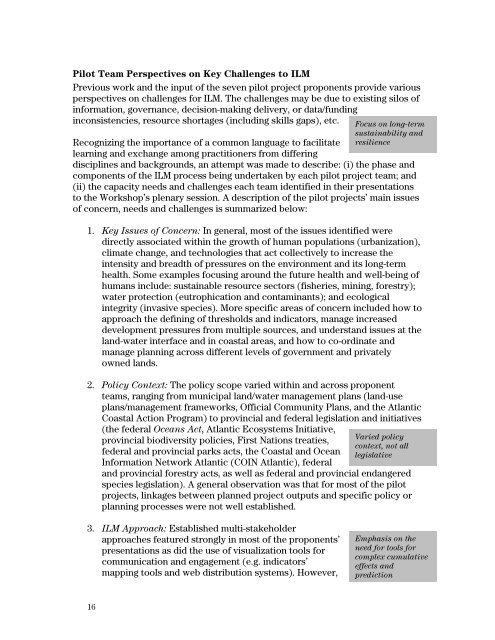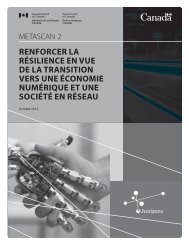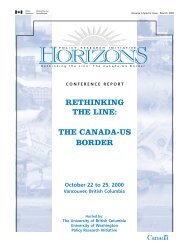PDF Format
PDF Format
PDF Format
You also want an ePaper? Increase the reach of your titles
YUMPU automatically turns print PDFs into web optimized ePapers that Google loves.
Pilot Team Perspectives on Key Challenges to ILM<br />
Previous work and the input of the seven pilot project proponents provide various<br />
perspectives on challenges for ILM. The challenges may be due to existing silos of<br />
information, governance, decision-making delivery, or data/funding<br />
inconsistencies, resource shortages (including skills gaps), etc.<br />
Recognizing the importance of a common language to facilitate<br />
learning and exchange among practitioners from differing<br />
disciplines and backgrounds, an attempt was made to describe: (i) the phase and<br />
components of the ILM process being undertaken by each pilot project team; and<br />
(ii) the capacity needs and challenges each team identified in their presentations<br />
to the Workshop’s plenary session. A description of the pilot projects’ main issues<br />
of concern, needs and challenges is summarized below:<br />
1. Key Issues of Concern: In general, most of the issues identified were<br />
directly associated within the growth of human populations (urbanization),<br />
climate change, and technologies that act collectively to increase the<br />
intensity and breadth of pressures on the environment and its long-term<br />
health. Some examples focusing around the future health and well-being of<br />
humans include: sustainable resource sectors (fisheries, mining, forestry);<br />
water protection (eutrophication and contaminants); and ecological<br />
integrity (invasive species). More specific areas of concern included how to<br />
approach the defining of thresholds and indicators, manage increased<br />
development pressures from multiple sources, and understand issues at the<br />
land-water interface and in coastal areas, and how to co-ordinate and<br />
manage planning across different levels of government and privately<br />
owned lands.<br />
2. Policy Context: The policy scope varied within and across proponent<br />
teams, ranging from municipal land/water management plans (land-use<br />
plans/management frameworks, Official Community Plans, and the Atlantic<br />
Coastal Action Program) to provincial and federal legislation and initiatives<br />
(the federal Oceans Act, Atlantic Ecosystems Initiative,<br />
provincial biodiversity policies, First Nations treaties,<br />
federal and provincial parks acts, the Coastal and Ocean<br />
Information Network Atlantic (COIN Atlantic), federal<br />
Focus on long-term<br />
sustainability and<br />
resilience<br />
Varied policy<br />
context, not all<br />
legislative<br />
and provincial forestry acts, as well as federal and provincial endangered<br />
species legislation). A general observation was that for most of the pilot<br />
projects, linkages between planned project outputs and specific policy or<br />
planning processes were not well established.<br />
3. ILM Approach: Established multi-stakeholder<br />
approaches featured strongly in most of the proponents’<br />
presentations as did the use of visualization tools for<br />
communication and engagement (e.g. indicators’<br />
mapping tools and web distribution systems). However,<br />
Emphasis on the<br />
need for tools for<br />
complex cumulative<br />
effects and<br />
prediction<br />
16











